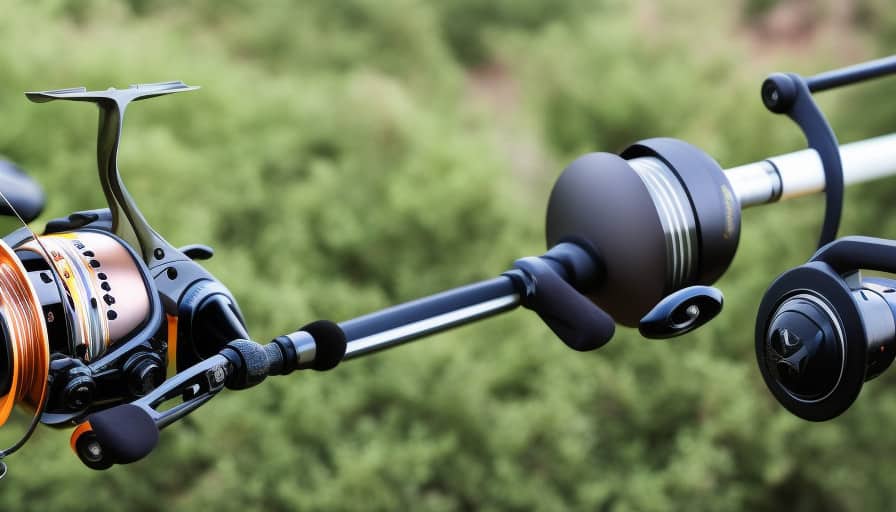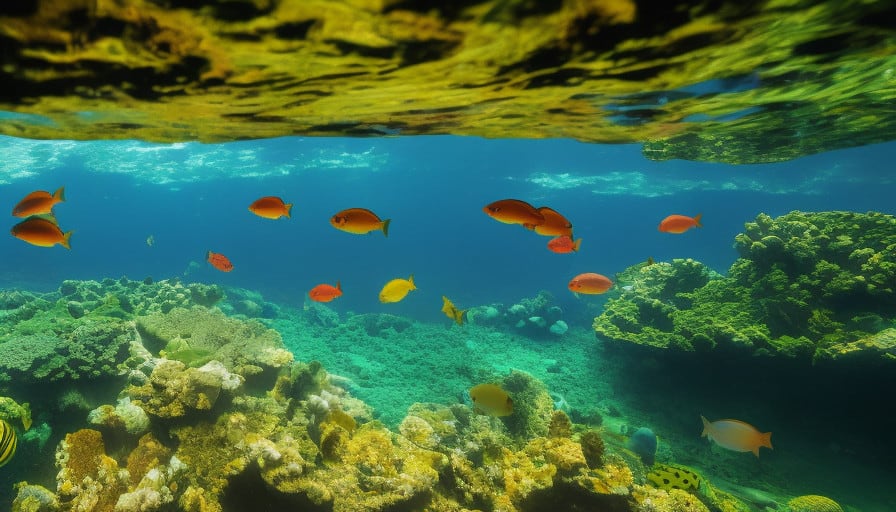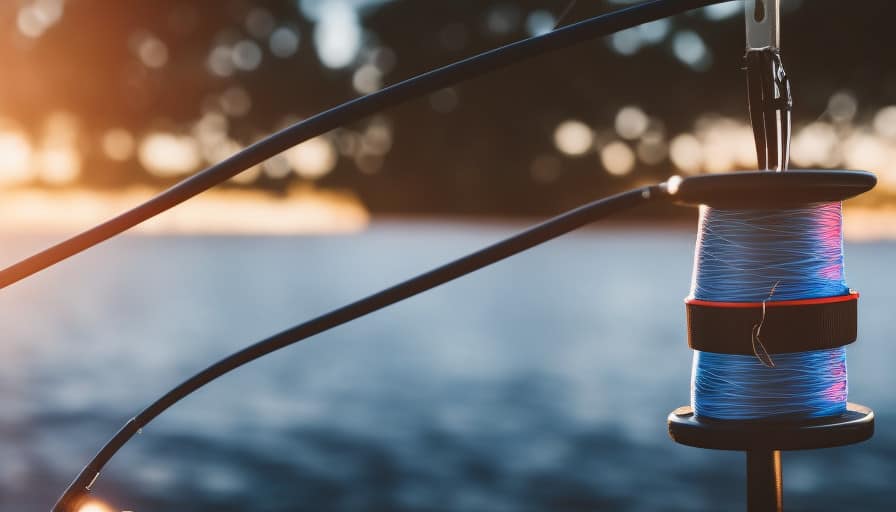Trout fishing in streams requires a comprehensive understanding of the strategies that increase the likelihood of a successful catch. This article aims to provide an informative and detailed overview of the techniques and knowledge necessary for mastering stream fishing.
By selecting the appropriate fishing gear, comprehending trout behavior and habitat, perfecting casting and bait presentation, mastering positioning and movement in the stream, and adhering to safe catch and release practices, anglers can enhance their chances of a fruitful fishing experience.
Selecting the Right Fishing Gear
The selection of appropriate fishing gear is crucial when engaging in stream fishing for trout. Choosing the right fishing line and selecting appropriate hooks are two key factors that can greatly impact the success of your fishing trip.
When it comes to fishing line, a monofilament line is often the preferred choice for stream fishing. It offers good strength and flexibility, allowing for better control over the lure or bait. Additionally, a lighter line weight, around 4-8 pounds, is recommended for trout fishing in streams. This ensures that the line is less visible to the fish and allows for better sensitivity to detect bites.
In terms of hooks, it is important to consider the size and type that is suitable for trout fishing in streams. For smaller-sized trout, a size 8 or 10 hook is appropriate, while larger trout may require a size 6 or 4 hook. Additionally, using barbless hooks is encouraged to minimize harm to the fish and make catch-and-release easier. Furthermore, using hooks with a thin wire gauge can improve hook penetration and reduce the chances of the hook bending or breaking during the fight.
Understanding Trout Behavior and Habitat
Understanding the behavior and habitat preferences of trout is crucial for successful angling in stream environments. Trout, being cold-water fish, have specific feeding patterns and spawning habits that anglers should be aware of. Here are some key points to consider:
-
Feeding Patterns
-
Trout are typically opportunistic feeders, actively searching for food.
-
They often feed near the water’s surface, focusing on insects and other small prey.
-
The timing of their feeding activity can vary depending on factors such as water temperature and weather conditions.
-
Trout tend to move to deeper pools or slower-moving sections of the stream during hotter parts of the day.
-
They are more active and likely to feed during low-light conditions, such as early morning or late evening.
-
Spawning Habits
-
Trout are usually spring spawners, with their breeding season occurring from late winter to early summer.
-
They typically select gravel or rocky areas in streams or rivers for spawning.
-
Males will establish and defend territories, often displaying aggressive behavior towards other males.
-
Female trout will lay their eggs in the prepared spawning bed, and males will fertilize them.
-
After spawning, trout may become less active and more focused on recovering and conserving energy.
Techniques for Casting and Presenting Your Bait
One effective approach to improve casting accuracy and bait presentation involves mastering the proper techniques and mechanics of angling. By understanding the principles behind a successful cast and selecting the right bait for the target species, anglers can greatly increase their chances of a successful fishing trip.
Casting accuracy plays a crucial role in stream fishing as it determines the placement of the bait in the water. A well-placed cast allows the angler to reach the desired target area, increasing the likelihood of attracting the attention of trout. To achieve casting accuracy, anglers should focus on their body positioning, rod control, and timing. By keeping their body aligned with the target and using smooth, controlled movements, anglers can deliver their bait precisely where they intend.
Bait selection is equally important in stream fishing. Different types of bait, such as live bait, artificial lures, or flies, can elicit different responses from trout. Anglers should consider the natural food sources available in the stream and choose bait that closely resembles them. Additionally, factors such as water temperature and clarity should also be taken into account when selecting bait.
In summary, mastering the proper techniques and mechanics of angling is essential for improving casting accuracy and bait presentation. Anglers should pay attention to their body positioning, rod control, and timing to achieve accurate casts. Additionally, selecting the appropriate bait that mimics the natural food sources in the stream can greatly enhance the chances of a successful catch.
| Techniques for Casting and Presenting Bait |
|---|
| Body Positioning |
| Rod Control |
| Timing |
| Bait Selection |
Navigating the Stream: Positioning and Movement
Navigating the stream effectively requires careful positioning and calculated movement to maximize the chances of a successful catch. Stream navigation is a crucial aspect of fishing techniques, as it allows anglers to locate prime fishing spots and avoid spooking the fish.
Here are some strategies for effective stream navigation:
-
Understand the flow: Familiarize yourself with the stream’s current and structure. Identify areas where the water slows down, such as deep pools and eddies, as these are often where trout congregate.
-
Use stealth: Move slowly and quietly along the stream bank to avoid alerting the fish. Avoid casting shadows or making sudden movements that could startle the trout.
-
Observe the surface: Look for signs of fish activity, such as rising trout or insects skittering across the water. This can help you identify where the fish are feeding and adjust your position accordingly.
-
Cast upstream: Position yourself downstream from your target area and cast your line upstream. This allows your bait or fly to drift naturally towards the fish, increasing your chances of a strike.
-
Adjust your position: If you’re not getting any bites, try moving to a different spot along the stream. Sometimes, a slight change in position can make all the difference.
Tips for Catching and Releasing Trout Safely
To ensure the well-being of trout populations, it is important to implement proper catch and release practices when engaging in angling activities. Trout conservation is a critical aspect of maintaining healthy fish populations in streams and rivers. Catch and release ethics play a significant role in minimizing the impact of angling on trout populations.
When practicing catch and release, anglers should handle the fish with care to minimize stress and injury. It is recommended to use barbless hooks, as they are easier to remove and cause less harm to the fish. Anglers should also avoid using nets with knots or rough surfaces, as they can damage the fish’s delicate skin and scales.
When handling a trout, wet hands should be used to prevent removing the protective mucous layer. It is important to keep the fish in the water as much as possible during the process, and to release it gently, allowing it to swim away on its own.
Conclusion
Trout fishing in streams requires the right gear, an understanding of trout behavior, and effective casting techniques.
By selecting the appropriate fishing gear, such as a lightweight rod and reel, anglers can optimize their chances of success.
Additionally, knowing the behavior and habitat of trout, such as their preference for cool, clear waters, can help fishermen locate their target.
Techniques for casting and presenting bait, like using a gentle and natural approach, can further enhance the likelihood of a catch.
Finally, by navigating the stream strategically and following catch-and-release practices, fishermen can ensure the sustainability of trout populations.
In conclusion, stream fishing for trout is a skillful pursuit that requires knowledge, patience, and reverence for the natural environment.




Leave a Reply